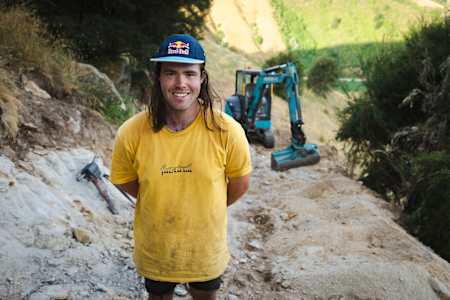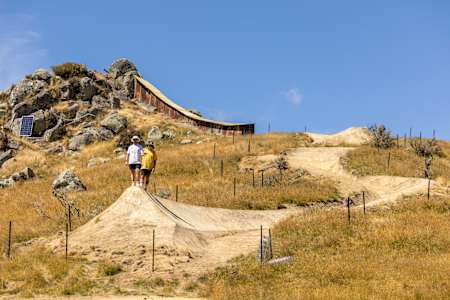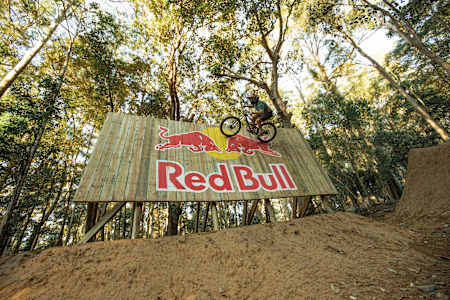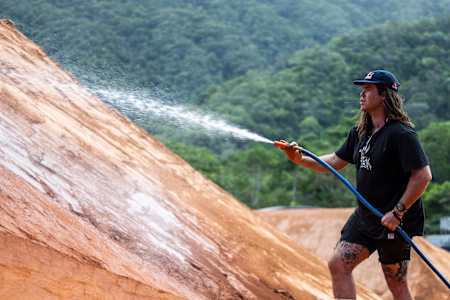Bike
Bike
Build a mountain bike trail like an MTB pro: Remy Morton's 7-step guide
Crafting the sickest mountain bike trails is a form of art, according to mountain bike athlete and trail builder Remy Morton. Follow his advice on planning and building new trails.

Australian mountain bike pro Remy Morton knows a thing or two about trail building. He co-owns a trail building company called Flux Trail alongside fellow Aussie rider Dave McMillan and New Zealander Jacob O'Donoghue Price.
Flux Trail are known for building progressive trails and courses for high-profile athlete projects, mountain bike events and bike parks. Flux Trail and Morton were involved in putting together the downhill track for Brook Macdonald's Dream Track project last year, and built a trail at Boomerang Bike Park in Australia for Morton's own Seven Days and 7k project. Morton has most recently been involved in helping put together the new course infrastructure for the various competitions at Crankworx Cairns.

17 min
Remy Morton: Seven Days and $7K
Can Australian MTB freerider Remy Morton build his ultimate line in seven days and with a AUD$7,000 budget?
Morton says building a trail is like creating a big painting on a mountain. It’s up to the builder to ensure it rides well, looks good and fits with the natural terrain – if done well, it’ll stand for decades to come.
Here are Morton’s seven steps to crafting mountain bike trails:
- Get permission
- Get to know it
- Clear it
- Build it
- Walk it
- Ride it
- Maintain it
01
Step 1: Get permission
The most essential step – make sure you have all relevant permissions to access and work on the land before you start anything. For the Dream Track build, Morton and Macdonald scouted areas in New Zealand to build the 3km length track. When they found that perfect mountain spot in Motueka on New Zealand's South Island, they discovered it was on land owned by a farmer, Patrick Rose. After getting his approval to build a trail, it was full steam ahead.
Morton was heavily involved in the building of the Dream Track trail
© Graeme Murray/Red Bull Content Pool
02
Step 2: Get to know it
The more you know, the better you can build. Spend time getting intimate with the land and work with locals who know it well.
“Study satellite images and topographic lines to see where the creeks, gullies, bluffs or cliffs are. Usually, the sickest terrain on a mountain is in the gullies, but they will typically lead into something too hectic to build or ride in, and you’ll get stuck easily,” says Morton.
“Once you’ve worked out the places to avoid, start hiking with a rough plan in your head. You can map the trail with a GPS or simply use marker tape. Key features will reveal themselves quickly, and as you spend more time in the marked area, you will begin to see more possibilities.”
If Morton had an idea for a build he puts it down in his notebook
© Graeme Murray/Red Bull Content Pool
Morton stresses the importance of working with the land rather than against it.
“Not only does it mean the whole build process will be easier, but you’ll naturally build a trial that drains well, looks good in the landscape and is sustainable.”
Another big consideration is the native flora of the area and the environment.
"Wise-up on what natives you’re working around,” he says.
03
Step 3: Clear it
Rather than clearing from start to finish, Morton recommends starting on the trickiest part of your trail so you know whether it is achievable to build through. It can also be easier to work the steepest sections upwards to get better visibility of the trail. Once cleared, move on to the rest of the trail, working top to bottom.
“Only clear what is necessary for the type of trail you want to create. If you want a loamy trail, consider keeping more natural matter like moss on the ground. You never want to cut down trees, but sometimes there might be a few – so make a wise choice. Perhaps it’s already dead or is a common, unprotected species.”
04
Step 4: Build it
Build it in one hit or do it in stages – there’s no right or wrong way to go about it. Finesse those features and get that good flow going. As you’re building, start to formulate a maintenance plan for when the trail is finished.
“Find the pockets of good dirt, and if you have any excess while digging, pile it up in areas where you might need it in the future. I always keep a pile of good rocks on the side too.”
05
Step 5: Walk it
Once fully built, do a final walk of the entire track. Walking both up and down, look out for any sharp roots or branches and check no tools have been left behind.
“Tidy it all up and make it look natural and presentable. If I’ve had to cut trees, roots, or branches, I drag them away to compost out of view. This is how you show respect for the land.”
Morton and Macdonald assess the Dream Track trail after its completion
© Graeme Murray/Red Bull Content Pool
06
Step 6: Ride it
As a general rule, the more dirt work you’ve done, the longer you should leave the trail to settle before the first run. Jump tracks need a lot of time, while a more natural enduro trail can be ridden much earlier.
“I personally like leaving my builds to sit for a long time before I ride them. It lets everything settle and go hard while the moss and roots grow back into place. I have trails that I’ll leave for months before I ride them.”
When it’s ready, head out there with other people and take it super easy!
“If there’s a feature, do a few run-ins before you hit it because it always rides differently to what you imagine. You’ve spent so much time building the trail – try to have some control and patience to go at a safe pace.”
07
Step 7: Maintain it
Regular maintenance will have your trail running smoothly for years to come. If your build was in a public network, it pays to share your knowledge with others who can help with the upkeep.
“It doesn’t take long to write notes about the trail. Include a basic map, the key features to maintain, any areas of concern, locations of good dirt or rocks and any water sources.”
Morton giving some TLC to the Crankworx Cairns Speed and Style course
© Graeme Murray/Red Bull Content Pool
Getting involved in trail building
Morton says the more you build, the more you discover what you can do. Hit up a bike club about dig days, or talk to your local bike shop to see what’s going on. Most importantly, work closely with locals who know the land because the dirt is different wherever you go.











